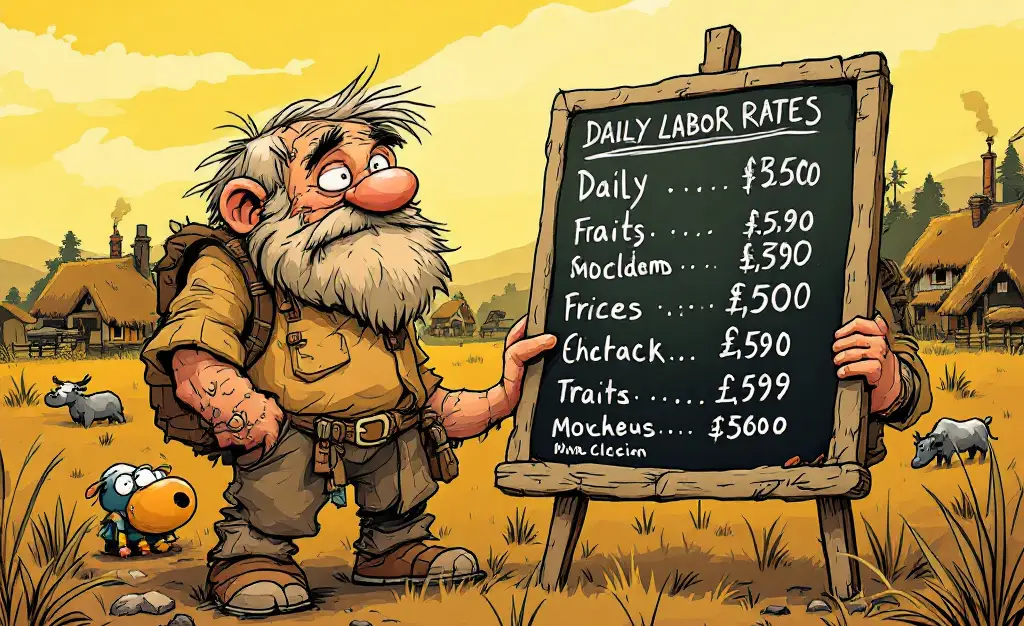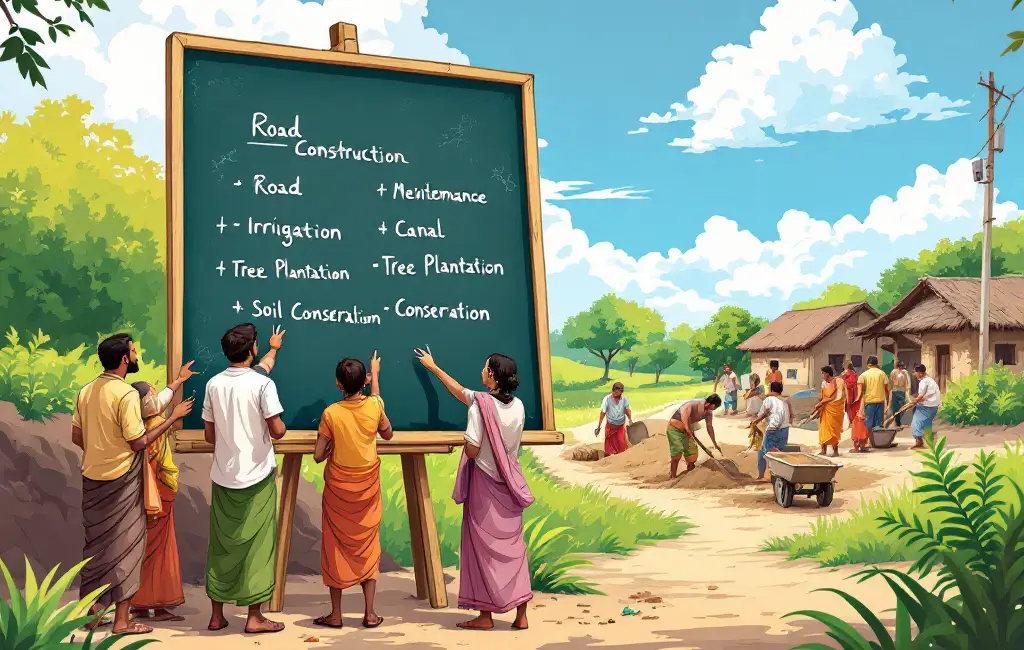In rural India, the struggle for stable employment is real. But thanks to the Mahatma Gandhi National Rural Employment Guarantee Act (MGNREGA), formerly known as NREGA, millions of rural families now have access to guaranteed wage employment. This initiative, introduced in 2005, has had a transformative impact on the lives of India’s rural population by providing a safety net against unemployment.
One of the most common questions people have when they’re first introduced to MGNREGA is: How much salary can I earn with a Job Card under MGNREGA?
This blog will give you a comprehensive look at how MGNREGA works, the salary you can earn, and various factors that determine your earnings under the scheme. By the end, you’ll have a clear understanding of the wages associated with this government initiative. In this scheme the job offered are very popular jobs in remote area or village town.
What Is NREGA or MGNREGA?
Before we dive into salaries, let’s briefly understand the structure of MGNREGA. This scheme was introduced to provide guaranteed wage employment to adult members of rural households for at least 100 days a year. The goal was to create sustainable livelihoods in rural areas by providing work through the construction of infrastructure like roads, ponds, and rural sanitation systems.
The scheme operates on the principle of demand-driven employment – meaning, you can request work, and if the government can offer it, they must provide it. The implementation of MGNREGA is carried out by Gram Panchayats, local authorities. That oversee the work and ensure it adheres to the rules.
You can apply for a Job Card under MGNREGA, which serves as an official document proving that you and your family are entitled to the employment offered by the scheme. The Job Card is crucial for receiving work and wages, and every adult member of the household can be included. For more information official website MGNREGA.
How Are MGNREGA Wages Calculated?
The wages under MGNREGA are not fixed across India. Instead, they vary depending on the state and region you live in. This is because of local economic variations, inflation rates, and the type of work performed.
1. Wages by State
The first factor that affects your salary under MGNREGA is location. Each state sets its own wages based on prevailing local conditions. The Union Ministry of Rural Development provides a central guideline for minimum wages, but states have the flexibility to decide on the actual rates, which can be higher or lower depending on factors like cost of living.
For instance, wages in states like Kerala, Tamil Nadu, and Maharashtra may be higher compared to states like Bihar or Uttar Pradesh. In some cases, wages can also fluctuate based on urban versus rural areas within a state. The payment is usually made on a daily wage basis, and workers are compensated for the number of days they worked.
2. Daily Wage Rates

Here are a few examples of daily wages by state:
- Bihar: ₹210 per day
- Uttar Pradesh: ₹250 per day
- Rajasthan: ₹275 per day
- Tamil Nadu: ₹300 per day
- Kerala: ₹350 per day
- Maharashtra: ₹380 per day
These wages are subject to change every year due to inflation and economic factors, and they also vary depending on the nature of work and the region.
3. Gender-Based Wage Disparity
While MGNREGA was designed to promote gender equality in rural employment, in many states, women may receive slightly lower wages than men, though this has been progressively addressed through policy reforms. However, the wage disparity is not consistent across all states. In recent years, some states have even introduced programs to ensure equal pay for equal work regardless of gender, promoting a more inclusive work environment.
How Much Can You Earn in a Year?
If you’re working under MGNREGA for 100 days (which is the guaranteed number of workdays provided annually), your yearly earnings can be estimated as follows:
- In Bihar with a daily wage of ₹210, for 100 days, you can earn around ₹21,000.
- In Tamil Nadu with a daily wage of ₹300, your yearly income can reach ₹30,000.
- In Maharashtra with ₹380 per day, you could earn approximately ₹38,000 annually.
It’s important to remember that these figures are estimates. Some people might work more than 100 days, and others might work fewer. The government doesn’t guarantee that you’ll get 100 days of employment every year, but you can request work, and they must try to provide it as long as it’s available.
4. Type of Work and Pay Structure
The wages under MGNREGA depend on the type of work being done. The work is often manual labor that involves physical activities like digging, construction, and maintenance of public infrastructure.
Here are some common types of work under the scheme:
- Road Construction: Labor-intensive work like building rural roads, irrigation systems, and flood control works.
- Water Conservation: Tasks related to maintaining tanks, ponds, and reservoirs.
- Afforestation: Planting trees and maintaining green cover in rural areas.
- Land Development: Activities like clearing lands for farming or conservation projects.
- Soil Conservation: Work aimed at preventing soil erosion and enhancing productivity.
Each task prices differently, but typically, employers will pay slightly higher for manual tasks that require more effort. Also, as a general rule, if the task involves machine operation or technical expertise (e.g., surveying, mapping), the wages may be slightly higher.
5. Payment Process: How Do You Get Paid?

The payment process can sometimes be slow due to various factors, including delayed work completion or verification processes, but the system is improving with the help of technology.
You’ll receive a weekly or bi-weekly payment based on the number of days worked. The government uses “payment ledgers” to ensure that workers are paid fairly, and wage payments are made electronically to curb corruption and ensure transparency.
Additional Benefits of MGNREGA
While the salary is one of the primary attractions of MGNREGA, there are other advantages as well:
- Guaranteed Employment: Every rural household is entitled to 100 days of wage employment every year. This program insure that work will be available who require it.
- Skill Development: While working under this, workers may also have the opportunity to develop new skills, which can be valuable for other employment opportunities in the future.
- Social Security: it helps to provide a safety net against seasonal unemployment and acts as a tool for social security, especially for families dependent on agriculture.
- Women Empowerment: Women make up a large portion of MGNREGA workers, and many women in rural India now enjoy financial independence and greater decision-making power in their households.
- Rural Development: The projects completed under MGNREGA contribute to improving infrastructure in rural areas, including roads, wells, ponds, and other facilities.
How to apply for NREGA job card registration?
Visit out gram panchayat office and make registration from there. Then under nrega employment issued to you nrega job card. You can download from official website. Once any work related to your skill in village then made allocation to you.
Conclusion: Is MGNREGA Worth It?
So, how much can you earn with a Job Card under MGNREGA? It all depends on your location, the type of work available, and the state-specific wage rates. While MGNREGA doesn’t make you rich, it can provide a reliable source of income for rural families who might otherwise struggle to find employment.
On the plus side, this scheme also gives you job security and an opportunity to contribute to local development. Wages in rural areas are lower than those in urban areas. However, they still significantly contribute to reducing poverty and unemployment in rural regions.
Whether you’re a farmer, construction worker, or just someone looking for a steady income, having a Job Card under MGNREGA can be a significant step towards economic stability. The government frequently analyzing the scheme works to improve the implementation of the scheme. There’s a lot of potential for this to continue being a lifeline for rural India in the future.
Frequently asked Questions (FAQ)
Does Nrega or Mgnrega provide computer work ?
MGNREGA primarily focuses on providing unskilled manual labor for rural households to enhance livelihood security and infrastructure development. However, it does include limited opportunities for computer-based work, mainly in administrative and monitoring roles. These roles involve data entry, beneficiary record-keeping, and job card management. They also include tracking work progress and using the MIS for reporting and planning. The National Mobile Monitoring System (NMMS) under MGNREGA also involves digital attendance tracking, requiring basic technological skills.
Computer-related roles are often found at the Gram Panchayat, block, or district levels. These roles are more administrative than direct employment under the scheme. MGNREGA does not provide computer-based employment as part of its core labor guarantee. These roles support the program’s implementation and management.
Is working the night shift in Nrega or Mgnrega?
MGNREGA is designed for unskilled manual labor performed during daylight hours. It prioritizes worker safety and proper supervision, making night shift work uncommon. We carry out tasks like water conservation, afforestation, and road construction under natural light. Administrative roles supporting MGNREGA may require flexible hours. The core labor activities under the scheme do not include night shifts. This is due to safety and practical considerations in rural work environments.
